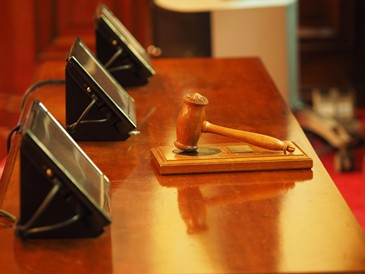The courtroom has evolved radically in the last ten years. Gone are the times when legal arguments were made out of paper documents, eyewitness testimony and physical evidence. In the modern world, digital evidence (smartphone data, surveillance footage, metadata) has become one of the most influential instruments of contemporary litigation. With the advancement in technology, courts are rapidly changing the way the process of seeking and dispensing justice.
What Counts as Digital Evidence?
Digital evidence refers to any information that exists or is conveyed in digital format. This covers:
- Texts
- Emails
- GPS tracking
- CCTV footage
- Social media activity
- Computer files
- Dashcam and body-cam recordings
- Smart-home logs
Since this information is regularly timed, stored and traceable, it can provide a degree of accuracy and dependability that conventional evidence cannot. For example, digital timestamps can verify that a message has been sent prior or after an incident. The location of a person can be verified using GPS tracking. Events can be documented visually through photos and videos. This kind of detail has rendered digital evidence to be an indispensable aspect of civil as well as criminal cases.
Why Digital Evidence Is So Influential
Digital records help eliminate uncertainty. They often provide objective insights into events which eyewitnesses cannot always do accurately. Data does not fade away as memory does. Courts also tend to view properly authenticated digital evidence as highly credible. When handled correctly, it can:
- Strengthen claims
- Undermine false statements
- Establish timelines
- Prove negligence
- Highlight inconsistencies
This has been especially impactful in personal injury cases. Take accident reconstruction as an example. Dashcam footage, vehicle black box data, and location tracking can demonstrate what actually happened in auto accident lawsuits. Litigants such as Jarrett Blakeley are employing digital evidence to develop stronger cases on behalf of their clients.
New Challenges for Lawyers and Judges
Even with its strengths digital evidence brings new concerns. Authenticity is the greatest challenge. The courts should be sure that evidence is true, un-altered, and obtained through legal means. Due to the emergence of advanced editing software and AI-powered deepfakes, this has never been more crucial.
Another challenge is data privacy. Extracting information from someone’s device must follow strict legal procedures. Without proper authorization, evidence can be ruled inadmissible Lawyers must now understand:
- Chain of custody for digital files
- Encryption issues
- Metadata analysis
- Forensic imaging
- Authenticity verification methods
This change has seen technological literacy become a key component of contemporary law practice.
The Expanding Role of Forensic Experts
Digital forensic specialists are frequent participants in courtrooms nowadays. They assist lawyers to reclaim deleted files, examine device logs, confirm metadata, and display complicated digital evidence in a manner that can be understood by judges and juries. Their participation makes the digital evidence reliable and admissible.
Technology Is Making Justice More Accessible
Besides the litigation approach, technology is also improving justice itself. Virtual hearings, e-filed documents, and online archives have made court proceedings to be more efficient. Remote testimony allows those who cannot travel to take part. The changes help reduce wastage of time and make justice more accessible to everyone.
In the future, more innovations can be predicted. AI-based analysis applications, automated evidence validation, and stronger cybersecurity to name a few. This progress will help people in the legal profession work more efficiently and the courts to keep up with the electronic nature of the current world.
Endnote
Digital evidence is going to become more significant as technology keeps developing. Gadgets and sensors will continue to record aspects of everyday life. Courts too will use digital data to uncover the truth. When used responsibly, digital evidence strengthens cases and trust in the justice system.

